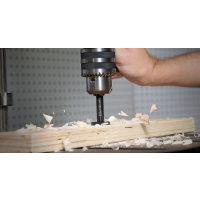One of the best parts of woodworking, other than the pride of creating something yourself, is often making money off your craft. You do everything you need to list your items online — take beautiful photos, write a product description, research competitive prices, and calculate your own.
And then it happens. Someone comes along and tries to haggle you down to a lower price. Sometimes they’re polite about it (if you can call haggling "polite" in this situation), and sometimes they’re straight-up rude.
This happens all too often. Maybe they think they could make it themselves, or they’ve seen less expensive versions of something similar. Either way, many consumers don’t understand the time and money it takes to create what you’ve made, and you deserve to be paid for it. So how do you defend your prices to someone who doesn’t want to pay them?
First, take a deep breath. Inhale, exhale.
Remember that you chose your price for a reason. In fact, you may have even priced it lower than you thought you should so that you’d be more competitive with similar products. There are so many factors that go into determining a price, and a potential customer won’t know what those are.
Your price covers your materials and tools used. A cheaper product is cheaper for a reason. It could be made of pine, whereas yours is made of oak. You might be using a top-of-the-line saw blade for smoother cuts, or maybe you bought a fancy set of drill bits that won’t overheat and lose shape. You could even be saving up to build your own woodshop so you have a designated space for your work. These all factor into the why behind your price.
Additionally, you are spending your precious time making and building, and different techniques and styles will take different amounts of time. For example, hand-cut dovetails will always take more time than pocket holes, which means it will take you longer to finish a piece. However, that dovetail joinery is a higher quality and will last longer. Plus, you had to take the time to learn how to cut dovetails, which was time you couldn’t spend building other items to sell. The time you spend working on pieces is worth money, and you deserve to add a decent hourly build rate on top of the cost of materials and tools. If minimum wage workers can’t make a living off those funds, how can you?
The first few times you have to defend your price to someone, it’ll probably feel uncomfortable. But learn to be confident in your prices. If a potential buyer can’t understand the skill, time, and supplies that have gone into your work, it’s okay to walk away. Know your worth and get comfortable with it.
This image from The House of Timber might sum it up best:







